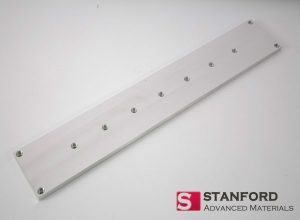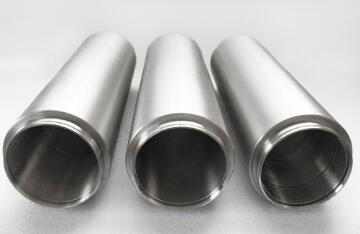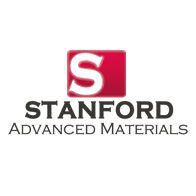Rectangular planar targets and coaxial cylindrical targets are the two most common magnetron sputtering targets, each of which has its advantages and disadvantages.
Rectangular planar target
The rectangular planar target is shown below.
 Planar Molybdenum sputtering target
Planar Molybdenum sputtering target
When it is placed in a magnetic field, the direction of the magnetic field is parallel to the cathode of the target surface, forming a toroidal magnetic field that is orthogonal to the electric field E. When the vacuum chamber is filled with argon gas, it is ionized and discharged, and Ar ions generated by the discharge bombard the surface of the cathode (target). The secondary electron e1 is subjected to the Lorentz force of the magnetic field B and moves in a direction perpendicular to the magnetic line of force. These electron motion paths are long, increasing the chance of magnetic collision of gas molecules and the ionization probability of the gas, thereby increasing the sputtering rate.
The advantage of the rectangular planar target is that the structure is simple, the versatility is strong, and the uniformity and repeatability of the film layer are good. The disadvantage is that the utilization rate of the target is low, generally only about 20%; when the target of the glow region (the magnetic field distribution region) is consumed to a certain extent, a strip-shaped pit is formed, and the target body is thinned; when the pit depth reaches a certain level, the target cannot be used any more.
Coaxial cylindrical sputtering target
The coaxial cylindrical sputtering target, or rotatory target, is shown below.
 Rotatory Molybdenum Sputtering Target
Rotatory Molybdenum Sputtering Target
When it is placed in a magnetic field, the magnetic lines of force are parallel to the target surface and orthogonal to the electric field E. The space enclosed by the magnetic field lines and the target surface is the plasma region that constrains the movement of electrons. This area is an annular space, and the coaxial cylindrical sputtering target has multiple annular spaces.
Compared to rectangular planar target, the advantages of the coaxial cylindrical sputtering target has compact structure and higher target utilization rate. However, the disadvantage is that there are a plurality of glow rings on the entire target surface during sputtering, and a continuous strip glow cannot be formed. Therefore, when a large-area film layer is plated, the uniformity of the surface of the film layer produced by coaxial cylindrical sputtering targets is poor, which is difficult to meet the requirements.
Both shapes of the target have their own advantages and disadvantages, and are related to specific preparation items and products. Stanford Advanced Materials (SAM) Corporation is a global supplier of various sputtering targets such as metals, alloys, oxides, ceramic materials. We provide high purity of planar and rotatory sputtering targets. If you are interested or have any questiones, please visit our website https://www.sputtertargets.net/ for more information.
Mots clés :



